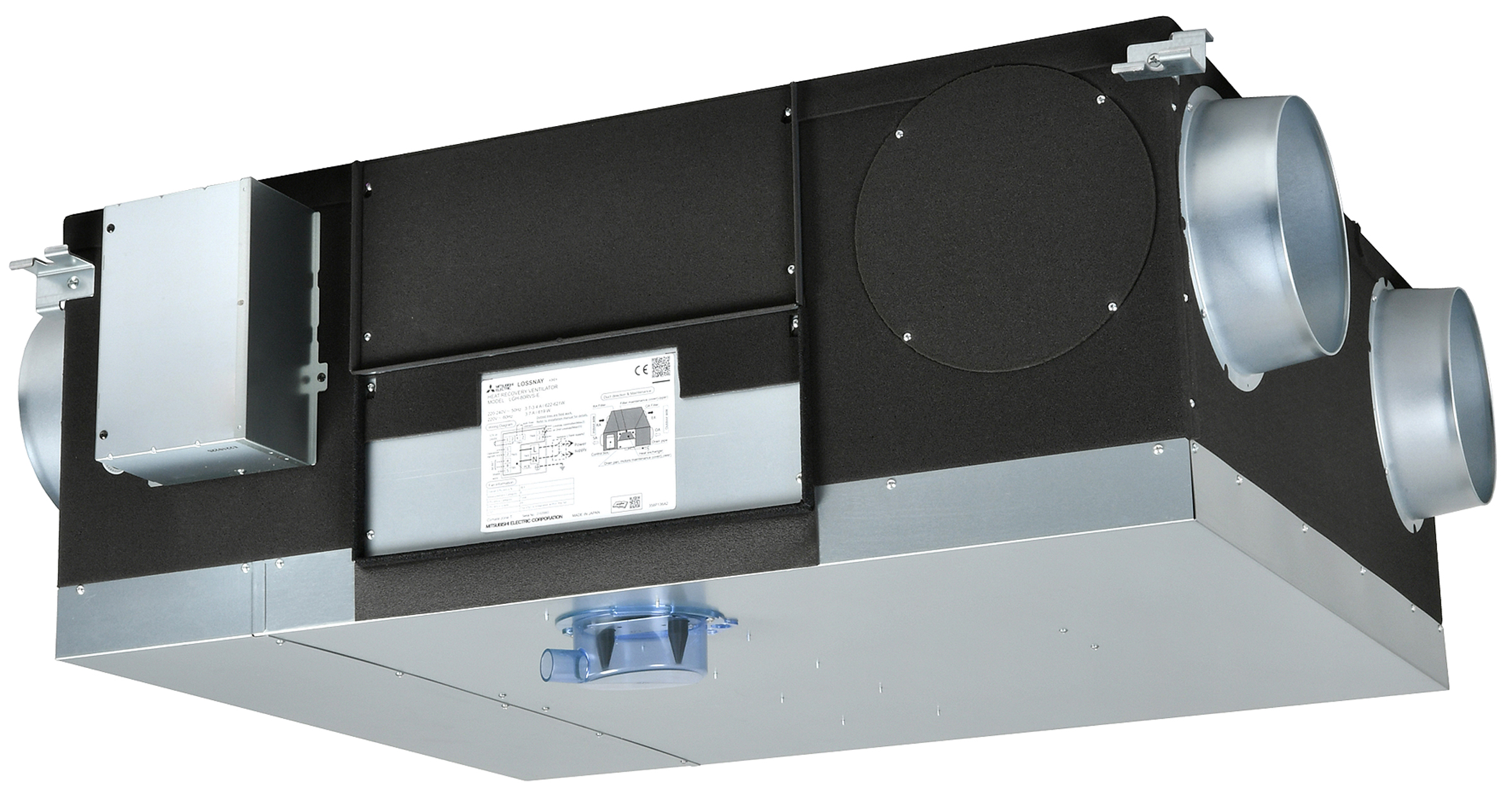
Mitsubishi Electric has launched a new commercial ventilation product to help improve indoor air quality in a multitude of situations including schools, restaurants, offices, shops, hotels and factories.
The LGH-RVS-E – which is suitable for installation in high humidity environments, is the latest product in the Lossnay range of commercial ventilation systems. It is specifically designed to simultaneously extract stale air from a building and provide a supply of fresh, filtered air. While doing this, the units simultaneously recover valuable heat energy for maximum efficiency.
As air quality within our buildings becomes an increasingly important focus, this new unit offers an efficient ventilation solution for a wider variety of environments. It is designed with a plastic heat exchanger rather than paper, and is also ideal for humid locations like bathrooms and wet rooms.
The LGH-RVS-E is also able to help address the full range of cooling and ventilation needs for spaces like offices and schools. The units are simple to interlock with Mitsubishi Electric’s Mr Slim and City Multi air conditioning systems, and easy installation makes it a perfect solution for those installing or specifying a ventilation for the first time.
Mitsubishi Electric’s Ventilation Product Manager, Hern Yau said “We’ve designed this unit to match the demand for improved indoor air, and this new Lossnay unit offers a solution that includes humid spaces and integrates easily with existing air conditioning systems”.
The LGH-RVS-E comes with a new generation of controls, with more flexible commissioning and two plug-and-play CO2 sensors.
With air quality an increasing concern, being able to see a simple traffic light system of CO2 levels can offer greater assurance and awareness for building occupants, and meet safety requirements – particularly for schools. The CO2 sensor can also help reduce installation costs, by taking its power from the fan unit rather than needing a separate power supply.
The units can also be integrated with Mitsubishi Electric’s AE-200E central control to offer touch-screen control of products, along with advanced features like energy monitoring and automated reporting.
Further details can be found here.

